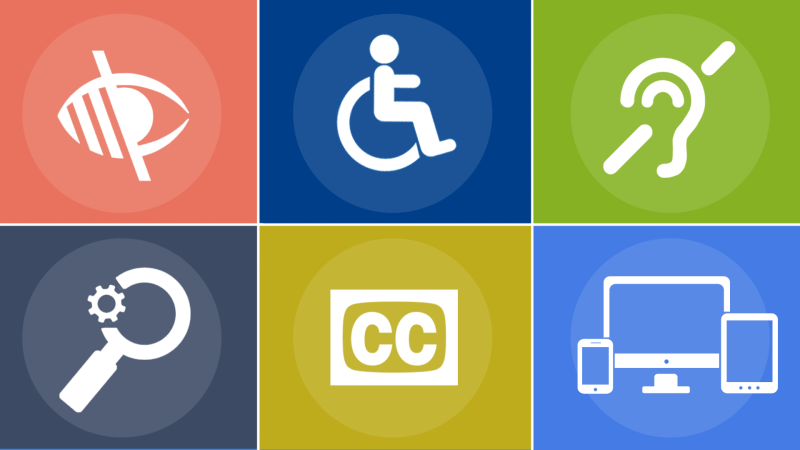Members of communities often develop language to describe the intricacies of its inner workings in simpler terms. Below, we've compiled a list of common terms used in accessibility and their definitions.
Accessibility
The measure of something's usability by persons with one or more disabilities.
Adaptability
The ability of certain building spaces and elements, such as kitchen counters, sinks, and grab bars, to be added or altered so as to accommodate the needs of individuals with or without disabilities or to accommodate the needs of persons with different types or degrees of disability.
Accommodation
Where it is impossible to remove barriers without undue hardship, special arrangements must be made so that persons with disabilities can fully participate.
A11y
short for accessibility, often used as a hashtag - #a11y. Created by combining:
a - first letter of accessibility
11 - 11 letters between first and last letters of accessibility
y - last letter
AODA
Accessibility for Ontarians with Disabilities Act
ADA (Americans with Disabilities Act)
Prohibits discrimination and ensures equal opportunity for persons with disabilities in employment, state and local government services, public accommodations, commercial facilities, and transportation. The ADA requires that reasonable accommodations be provided in meeting the needs of individuals with disabilities. While this law does not specifically deal directly with websites, there have been several lawsuits that have touched on whether websites fall under the Americans with Disabilities Act.
Alternative Text
The short text used described images---usually 125 characters or less.
Assistive technologies
Technologies (software or hardware) that increase, maintain or improve the functional capabilities of individuals with disabilities when interacting with computers or computer-based systems.
Audio browsers
Web browsers that provide a text-to-speech capability for the blind and visually impaired.
Captions
A textual representation of sounds--usually associated with television programming or movies; captions are meant to display in real time and to capture speech sounds and sounds beyond speech in some cases.
Screen reader
A software program used to allow reading of content and navigation of the screen using speech or Braille output. Used primarily by people who have difficulty seeing. JAWS and NVDA are examples.
Switch Control
An accessibility feature of iOS 7 and later that allows users with motor impairments to access their iPhone, iPod touch, or iPad by sequentially highlighting items on the screen. For more details, check out this blog post.

Usability measures the quality of a user's experience when interacting with a product or system, whether a website, a software application, mobile technology or any user-operated device.
Web Accessibility
Web accessibility in the CSU context is the application of design principles to make websites, web applications and web content usable by persons with disabilities who may be using assistive technologies to access the site.
Universal Design
Accessibility in a broader sense. Implies designing for accessibility as the base of the design process to provide the greatest benefit to the greatest number of people possible instead of as additional steps in the process only for those with disabilities. Also referred to as inclusive design, barrier-free design, human-centered design, design-first, person-first design, and universal access.
*Source: Usability.gov


Leave a comment: